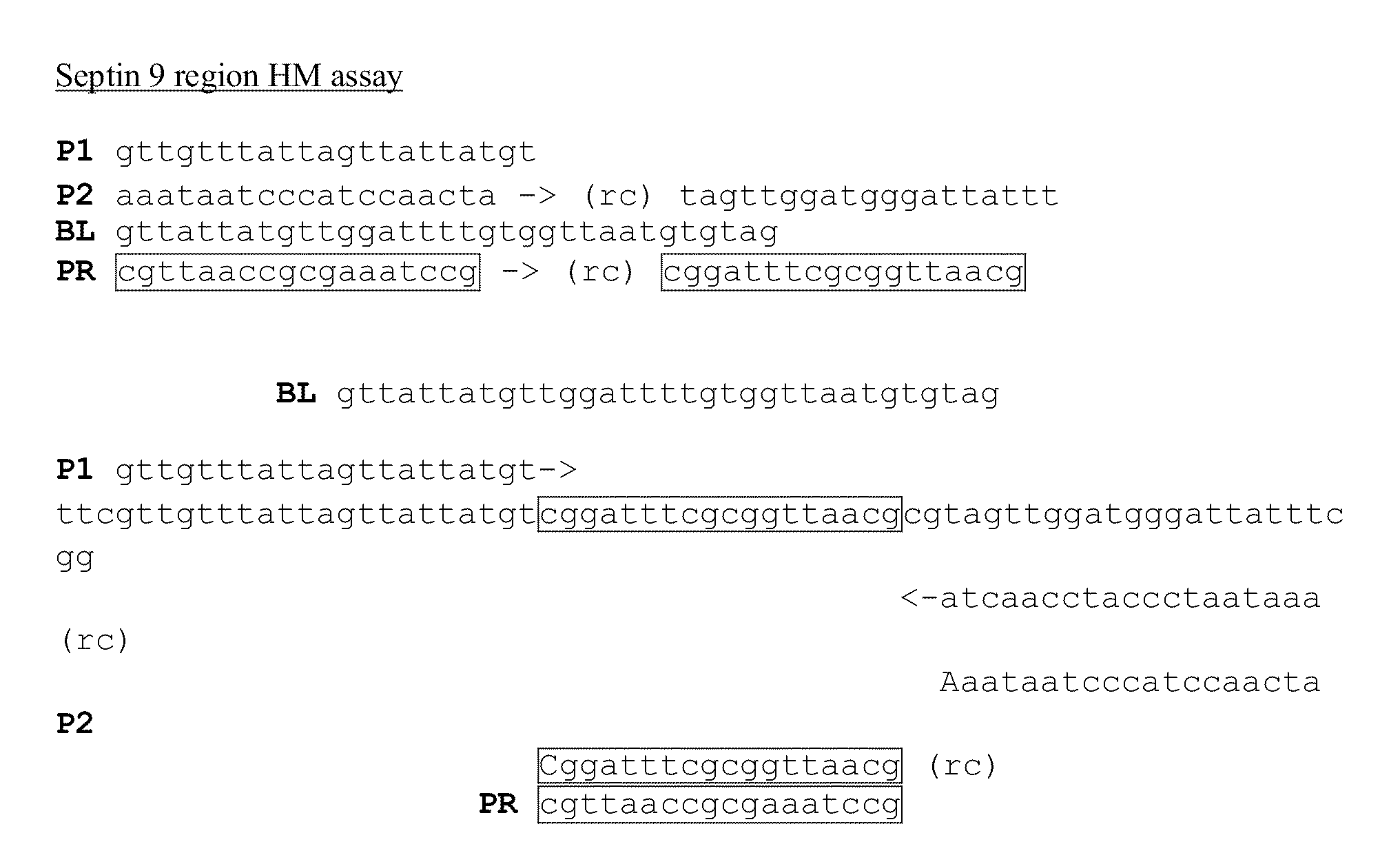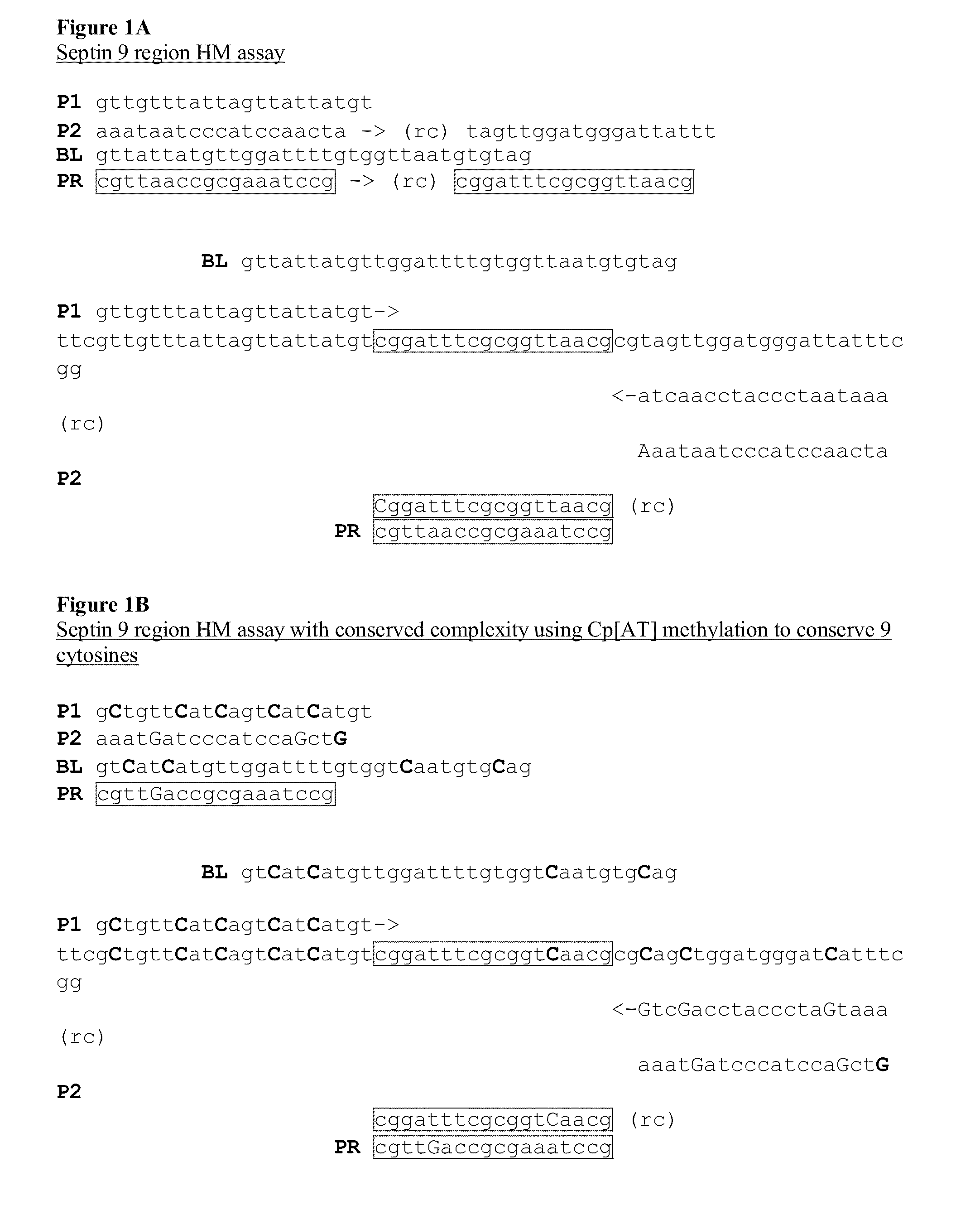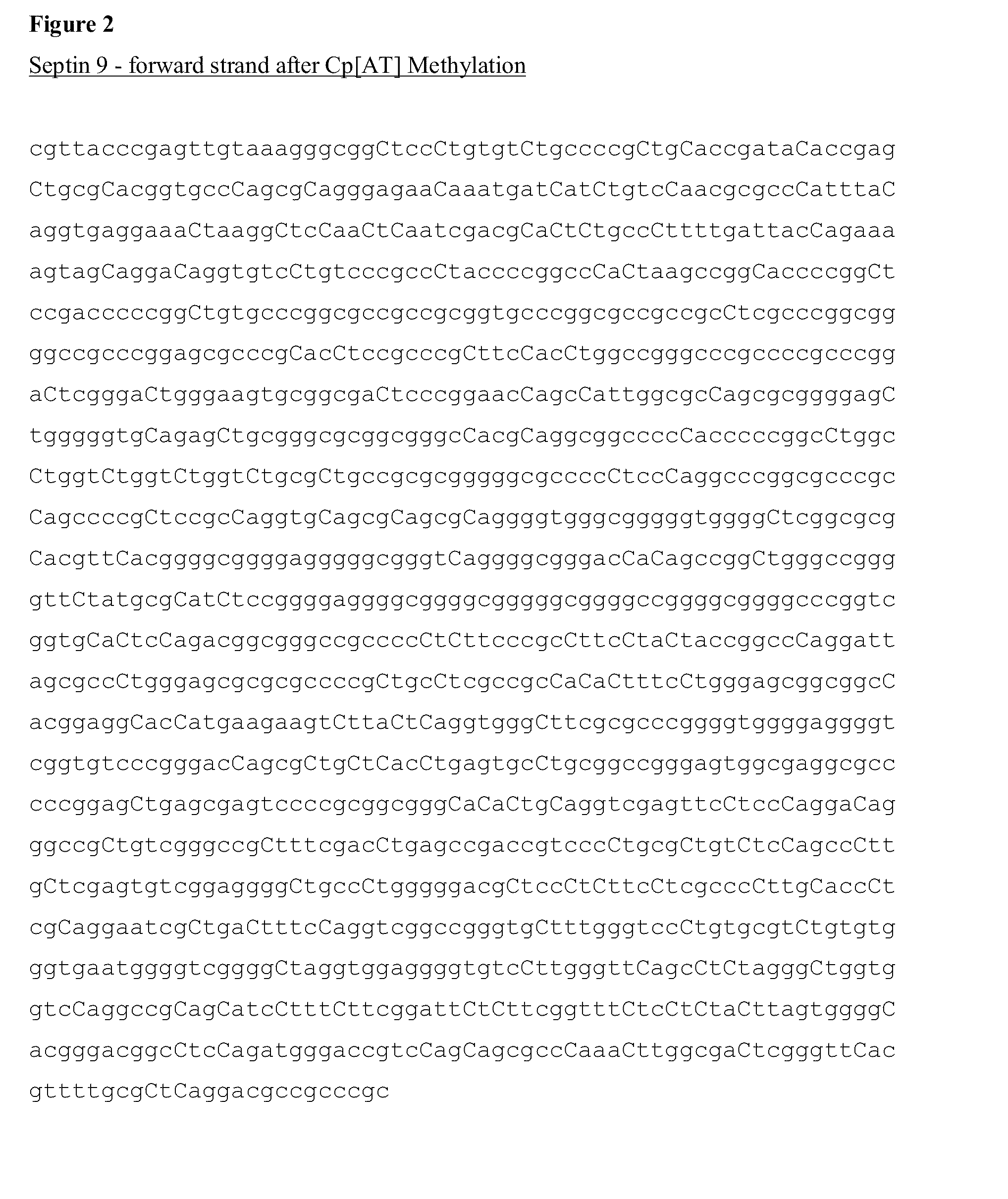Methods for preservation of genomic DNA sequence complexity
a technology of genomic dna and sequence complexity, applied in the field of genomic dna sequence complexity preservation methods and kits, can solve the problems of inapplicability of conventional dna analysis methods based on hybridization, difficult to identify methylation, difficult to detect 5-methylcytosine using particular standard methods, etc., and achieve the goal of preserving the complexity of genomic dna, avoiding the reduction of overall c content, and reducing poly t signals
- Summary
- Abstract
- Description
- Claims
- Application Information
AI Technical Summary
Benefits of technology
Problems solved by technology
Method used
Image
Examples
example 1
[0186]In this example as shown in Table 2, methods for preserving DNA sequence complexity of Septin 9, Q9HC74, PITX2, SHOX2, GSTPi, and RASSF2A genes, SEQ ID NO. 1-7 are shown.
[0187]Treatment of the said genes with an isolated and purified DNMT2 enzyme causes cytosines outside of the CpG dinucleotide sequence, in particular cytosines in the Cp [AT] sequence, to methylate. Further treatment of the said genes with isolated and purified AluI Methyltransferase, HaeIII Methyltransferase, and MspI Methyltransferase methylates cytosines in the agCt, ggCc, Ccgg, respectively. As shown in Table 2, this causes that not all of the unmethylated cytosines to be converted to uracil and ultimately as explained above to thymine after bisulfite treatment, i.e. preserves the complexity of the DNA sequence. For example according to Table 2, Sepin9 sense-strand region has 1229 cytosines and 614 cytosines have been preserved after bisulfite treatment of Cp[AT] methylated Septin9 gene via DNMT2 enzyme an...
example 2
[0189]An assay suitable for the methylation analysis of SEQ ID NO: 1 according to the present invention is designed. The assay was designed to be run on the LightCycler platform (Roche Diagnostics), but other such instruments commonly used in the art are also suitable. The assay was HeavyMethyl assay and the amplificates were designed to be detected by means of Lightcycler style dual probes. Further, a conventional HM assay for the segment of SEQ ID NO.: 1 (SEQ ID NO: 134) was compared with the HM assay according to present invention for the segment of SEQ ID NO.: 1 (SEQ ID NO: 135). For more details refer to FIGS. 1A and 1B.
[0190]DNA Extraction, DNMT2 and Bisulfite Treatment
[0191]Performing the following step:
[0192]Isolating the DNA with QIAGEN Genomic-Tip 500 / G or 100 / G according to the manufacturer's instructions. Then, preserving and untimely converting the purified genomic DNA via isolated and purified DNMT2 enzyme that adds a methyl group to a cytosine in the Cp[AT] sequences ...
PUM
| Property | Measurement | Unit |
|---|---|---|
| temperature | aaaaa | aaaaa |
| temperature | aaaaa | aaaaa |
| temperature | aaaaa | aaaaa |
Abstract
Description
Claims
Application Information
 Login to View More
Login to View More - R&D
- Intellectual Property
- Life Sciences
- Materials
- Tech Scout
- Unparalleled Data Quality
- Higher Quality Content
- 60% Fewer Hallucinations
Browse by: Latest US Patents, China's latest patents, Technical Efficacy Thesaurus, Application Domain, Technology Topic, Popular Technical Reports.
© 2025 PatSnap. All rights reserved.Legal|Privacy policy|Modern Slavery Act Transparency Statement|Sitemap|About US| Contact US: help@patsnap.com



